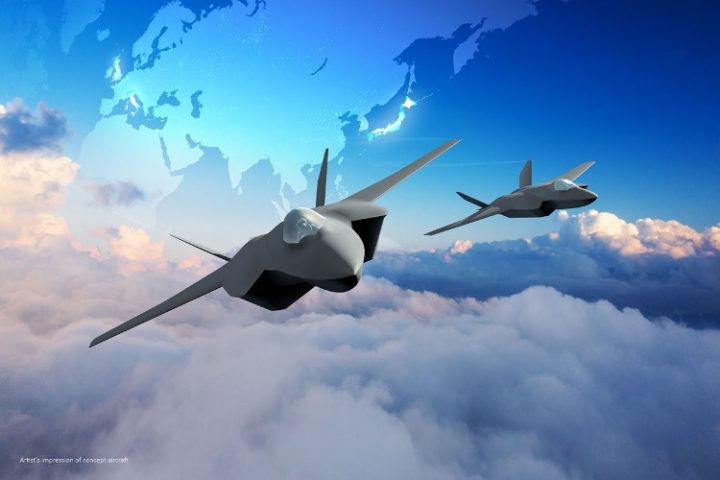
On Tuesday, Japan’s Cabinet approved a proposal to sell future next-generation fighter jets to other nations, marking another move away from the pacifist principles established by the country at the conclusion of the Second World War, as the Associated Press reports.
The contentious choice to permit international arms sales is anticipated to reinforce Japan’s participation in a year-long initiative to jointly develop a new fighter jet alongside Italy and the U.K. However, it also reflects a broader strategy aimed at enhancing Japan’s arms industry and strengthening its position on the global stage. For the moment, however, Tokyo has stated that it does not intend to export any lethal weapons co-developed except for the new fighters, which are not anticipated to be in service until 2035.
Japan has historically restricted most arms exports due to its pacifist constitution. In spite of this, the country recently started to reconsider this stance amid escalating international threats. Back in 2014, Tokyo initiated exports of certain non-lethal military equipment. Then, in December, the Japanese government green-lighted a modification permitting the sale of 80 lethal weapons and components that it produces under licenses from other nations. These weapons are then sold back to the licensors.
This adjustment made it possible for Japan to supply U.S.-designed Patriot missiles to the United States, assisting in the replenishment of munitions being sent by America to the Ukrainian front.
AP notes of Japan’s fighter jet project:
Japan is working with Italy and the U.K. to develop an advanced fighter jet to replace its aging fleet of American-designed F-2 fighters, and the Eurofighter Typhoons used by the U.K. and Italian militaries.
Japan, which was previously working on a homegrown design to be called the F-X, agreed in December 2022 to merge its effort with a British-Italian program called the Tempest. The joint project, known as the Global Combat Air Program, is based in the U.K., and hasn’t yet announced a new name for its design.
In its decision, the Cabinet said that the ban on exporting finished products would hinder efforts to develop the new jet, and limit Japan to a supporting role in the project. Italy and the U.K. are eager to make sells of the jet in order to defray development and manufacturing costs.
It is anticipated that exports would benefit Japan’s defense industry at a time when Prime Minister Fumio Kishida seeks to strengthen the military. Japan has looked warily upon China’s military buildup and its aggressiveness in the East and South China Seas. Moreover, Tokyo feels itself threatened by increasing joint military drills by China and Russia — both of whom were historical military adversaries of Japan.
Due to its history as a wartime aggressor and the aftermath of its defeat in World War II, Japan implemented a constitution restricting its military activities to self-defense. As a result, it long upheld a stringent policy aimed at controlling the transfer of military equipment and technology and prohibiting “lethal” weapons exports.
Given the decades-long taboo against militarization, members of the political opposition have denounced Kishida’s administration for embarking on the fighter jet project without providing a clear explanation to the public or obtaining approval for the significant policy shift.
Polls, meanwhile, show a divided public.
To alleviate the concerns from the pacifist side, the government is currently restricting the export of co-developed lethal weapons solely to the jet and has pledged that no sales will occur for deployment in active conflicts. Defense Minister Minoru Kihara stated that if a buyer were to utilize the jets for warfare, Japan would cease supplying the offending country with components such as spare parts.
Meanwhile, the jet has potential markets in the 15 countries with which Japan has defense partnership agreements, including the United States, Germany, India, and Vietnam. However, a defense official, speaking on condition of anonymity due to briefing rules, stated that Taiwan — a self-governed island claimed by China — is not under consideration.
Kishida is set to visit Washington in April. During this trip, he is expected to discuss potential new defense and weapons industry cooperation with U.S. leaders. The new policy could also facilitate Japan’s pursuit of a more significant role in alliances and regional defense partnerships.
While Japan is leaving behind its pacifist tradition in baby steps, the developments must nevertheless be making Beijing nervous. China fears a strong Japan, given the two nations’ history and Japan’s previous attempted conquest of China.
Japan is geographically close to China and Taiwan, a potential flashpoint. U.S. military forces are stationed in Japan, and Japan’s territory would likely be used for staging and logistical support in a conflict.
In the event of a U.S.-China war over Taiwan, Japan would allow America use of its bases and airspace. It might also contribute military forces, though the extent would depend on the specific situation and public opinion.
While the current arms sales may seem small at first glance, they mark the end of an era in Japanese and Asian politics.




